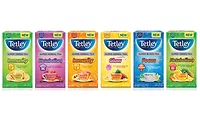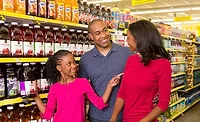Drug stores offer convenience, expertise for consumers
Loyalty and rewards programs keep consumers coming back.
For cold and flu season, allergy season and everything in between, drug stores provide consumers with the advice and relief they need for their ailments. This offering of necessity items, like prescription medications and over-the-counter drugs, has helped ensure channel growth during the recession while other retail channels struggled, states IBISWorld, Santa Monica, Calif., in its October 2012 report, “Pharmacies & Drug Stores in the U.S.”
This consistent foot traffic also boosts front-end sales as consumers stop to pick up a few food and beverage items while they’re in the store, IBISWorld reports. “Drug stores have added milk, frozen foods and other basic consumable items to meet the needs of the time-pressed consumer,” the report states.
Most of the major drug store chains stock beverage items including ground coffee, tea bags, ready-to-drink juices, soft drinks and alcohol beverages. In fact, 28 percent of consumers surveyed said they buy non-alcohol drinks, and 10 percent said they buy alcohol beverages during a typical trip to the drug store, states Chicago-based Mintel in its January 2013 report, “The Drug Store Shopper.” Plus, according to data from Chicago-based SymphonyIRI Group, drug store beverage sales increased across all measured categories during 2012. Combined with food sales, these items make up approximately 26 percent of total drug store sales at $12.6 billion, Mintel notes. Private label items account for 8.5 percent of these sales, it adds.
Overall, Mintel reports that total drug store sales were valued at $230 billion in 2011 and estimates that sales hit $229 billion in 2012. The aging baby boomer generation combined with further drug developments and health care reform will ensure continued growth for this channel by an average of 2.4 percent annually, hitting an estimated $269 billion by 2017, IBISWorld predicts.
However, as many mass merchandisers and supermarkets now offer pharmacies, these channels vie for a share of the dollar sales that drug stores could typically garner. To maintain their footing, both independent drug stores and larger chains should highlight their expertise in the arena, advises Jeff Weidauer, vice president of marketing and strategy for Vestcom International Inc., a Little Rock, Ark.-based retail solutions company. “It’s focusing on the trust; it’s focusing on the fact that, you know what, we’re a drug store; that’s what we do, and pharmacy is a significant part of our business. We’re experts in that space, versus a mass merchant who has a pharmacy in there, but they carry everything else from snow tires to sweatshirts,” he says. Also, because drug stores tend to be smaller and more localized than mass merchandisers, shoppers have opportunities to build relationships with their local pharmacist and other drug store staffers, he adds.
But before consumers can come in and meet that friendly pharmacist, drug stores have to use an acquisition strategy to bring them into the store, Vestcom’s Weidauer says. This is where food and beverage offerings come into play. “It’s performing a little bit of the convenience store role and putting products in there that people just want to run in and run out and grab a couple of things,” he says. “So, if you can get more people into your store, that’s a good thing for overall cash flow.”
Beyond these in-store offerings, loyalty and rewards programs are another way to keep consumers coming back, experts say. According to Mintel, 25 percent of consumers say they would shop at drug stores more often if they offered a better loyalty card program. Some major chains, including Camp Hill, Pa.-based Rite-Aid and Woonsocket, R.I.-based CVS Caremark, have been rewarding consumers through loyalty programs for years.
CVS/pharmacy launched its ExtraCare program 15 years ago but just this February expanded it with its ExtraCare Pharmacy & Health Rewards program, which gives loyal shoppers the opportunity to earn $5 ExtraBucks Rewards for every 10 prescriptions filled at its pharmacy, the company says. In 2010, Rite-Aid launched its Wellness+ reward program, which provides customers with free health and wellness benefits including shopping discounts and special prices, it says. Last September, Walgreens, Deerfield, Ill., launched its Balance Rewards program at all Walgreens and Duane Reade locations. Through the program, customers can earn points on thousands of items in stores and online and redeem the points whenever and however they want within the store, it says.
“Balance Rewards also strengthens our ability to better understand our customers, meet their changing needs, and treat our best customers even better,” said Adam Holyk, Walgreens’ divisional vice president of loyalty and consumer insights, in a statement.
Through building consumer loyalty and better understanding shopper needs through rewards programs, drug stores are well-poised for continued growth, experts say.
Preventing out-of-stocks
As drug stores expand their food and beverage departments, they also add a level of convenience for shoppers to pick up a couple of grocery items while they are picking up their medications. However, if shelves are not properly stocked with these items, this convenience factor can be diminished.
“If I’m running to the store and I know what I want … and it’s not on the shelf, that’s frustrating,” says Jeff Weidauer, vice president of marketing and strategy for Vestcom International Inc., a Little Rock, Ark.-based retail solutions company.
Statistically, 20 percent of consumers will select an alternate item in the store if their desired product is out of stock, but most others will go to another store for their desired item, Weidauer says. If an out-of-stock problem continues in a particular store, that can be a significant source of lost shoppers and dollars, he adds.
Research shows that most out-of-stocks are caused in the store, Weidauer continues. Although planograms are designed to ensure proper product placement and allow for easy inventory of on-shelf items, these directions are not always properly executed, and sometimes products are moved around, covering up out-of-stock items and hindering the re-ordering process, he says.
To prevent this, Vestcom offers its retail solution Shelf Strips. These shelf labels can be placed directly on the shelf molding to indicate to store employees where certain beverage items should go and makes it easier to see which items on the shelf are running low or out of stock, allowing them to order more to meet consumer needs, Weidauer says. For example, Shelf Strips can be used to indicate to clerks where a specific carbonated soft drink bottle should go on the drug store shelf and how many facings it should get in the aisle, resulting in easy shelf stocking and on-shelf inventory, he says. Plus, it helps shoppers because they can see the photo of the product that is supposed to be on the shelf and double-check that they’re picking up the right item, he adds.
Looking for a reprint of this article?
From high-res PDFs to custom plaques, order your copy today!




